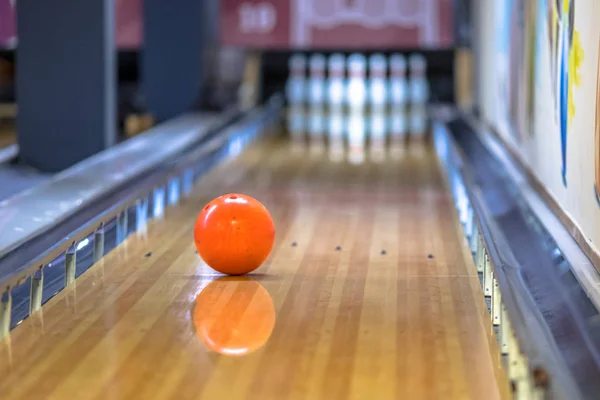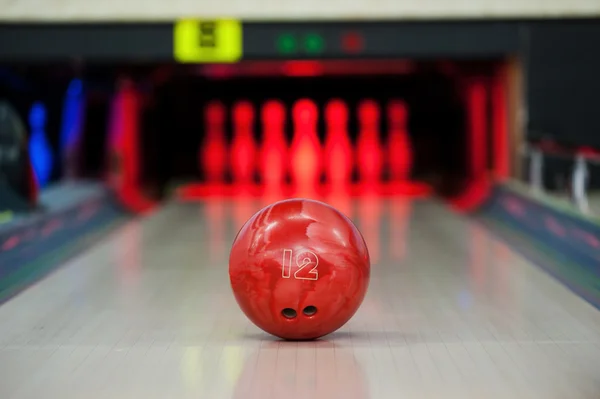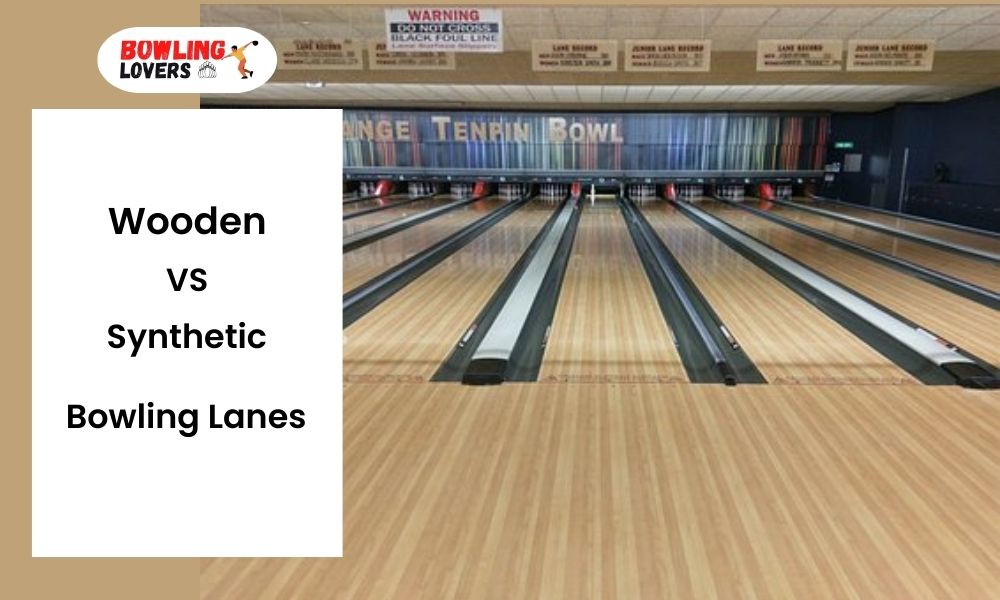Bowling is a sport loved by millions around the world. Bowling lanes have a major impact on your game, no matter if you play for fun or if you are a serious player.
There are two main types of bowling lanes: wooden and synthetic.
While both offer their own unique advantages and disadvantages, choosing the right type of lane can make all the difference in your performance.
Throughout this article, we will analyze the advantages and disadvantages of synthetic and wooden bowling lanes.
We will compare their costs, maintenance requirements, and performance to aid you in deciding which type of lane is most appropriate for your needs.
So, grab your bowling ball, put on your shoes, and let’s get rolling!
Advantages and Disadvantages of Wooden Bowling Lanes
Wooden bowling lanes have been around for centuries, and they still remain a popular choice in modern times.
Let’s explore the benefits and drawbacks of using wooden bowling lanes in bowling alleys.
Advantages
Better Grip
Bowlers may prefer wooden lanes over synthetic ones due to the superior grip they provide.
The wood surface allows for greater friction between the ball and the lane, enabling bowlers to have better control and accuracy when releasing their shots.
Durable
Wooden lanes are highly durable as they can withstand regular sanding and refinishing, making them an excellent long-term investment.
This is because they can easily remove scratches and dents without the need for replacement.
Natural Surface
Bowlers who value a traditional and authentic feel may favor wooden lanes over synthetic ones.
Wooden lanes offer a natural surface that cannot be replicated by synthetic materials, making them a popular choice for those who prefer the organic texture and sound of the ball rolling on wood.

Disadvantages
Absorption of Oil
Wooden bowling lanes absorb oil more readily than synthetic lanes.
This can cause the ball to hook earlier, which may lead to less consistent shot-making, as the ball’s trajectory may vary from one throw to the next.
Maintenance
Maintaining wooden bowling lanes requires frequent sanding and refinishing to keep them in good condition.
This upkeep is more demanding compared to synthetic lanes, which generally require less maintenance.
Cost
Wooden lanes are a more costly investment than synthetic lanes due to the higher cost of materials and installation.
Additionally, maintenance costs for wooden lanes are typically higher due to the need for regular resurfacing and refinishing to maintain their performance and appearance.
Advantages and Disadvantages of Synthetic Bowling Lanes
Synthetic bowling lanes have become increasingly popular in recent years, but they come with their own set of advantages and disadvantages.
It’s worth examining these pros and cons to determine whether synthetic lanes are the right choice for you.
Advantages
Consistency
Synthetic lanes have a more consistent surface, meaning that balls react predictably and uniformly.
This can help bowlers achieve greater shot-making consistency.
Low Maintenance
Synthetic lanes require less maintenance than wooden lanes.
They don’t need to be sanded, oiled, or resurfaced as frequently as wooden lanes do.
Weather Resistant
Synthetic lanes are less affected by changes in temperature and humidity.
This means that they can be used in a wider range of environments and climates.

Disadvantages
Reduced Oil Absorption
Synthetic lanes have a lower oil absorption rate than wooden lanes, which can result in less hooking and a different ball reaction.
Performance Variation
Some bowlers may experience variations in ball reaction when playing on different synthetic lanes, as not all synthetic lanes are manufactured to the same standard.
Limited Customization
Synthetic lanes offer limited customization options compared to wooden lanes, which can limit creative expression and branding opportunities for bowling centers.
Comparison of Wooden vs Synthetic Bowling Lane Performance
Bowling is a game of precision and accuracy, and the type of lane you bowl on can greatly impact your performance.
Wooden and synthetic lanes have their own unique characteristics, and understanding the differences between them can help you improve your game.
Oil Absorption
Wooden lanes have a softer surface, which means they absorb oil faster than synthetic lanes.
This tends to make the ball hook sooner and have a less drastic down-lane reaction.
Synthetic lanes, on the other hand, are smoother and do not absorb oil as quickly, which results in the ball skidding farther down the lane and having a more pronounced back-end reaction.
Durability
Synthetic lanes are harder and more durable than wooden lanes, which means they last longer and require less maintenance.
Wooden lanes, especially older ones, tend to be less durable and may need more frequent resurfacing.
Surface Wear and Tear
Bowling balls can cause visible wear and tear on wooden lanes over time, while synthetic lanes are more resistant to this type of damage.
This can lead to differences in ball reaction and lane conditions between the two surfaces.
Pin Action
The hardness of the lane surface can also affect pin action.
Wooden lanes may provide more back-end pin action due to the softer surface, while synthetic lanes may produce less pin action because of the harder surface.

Maintenance Requirements for Both Types of Bowling Lanes
Maintenance is key to keeping both types of bowling lanes in top condition.
Whether it’s synthetic or wooden, regular cleaning, oiling, and inspection are necessary to ensure a consistent and safe playing surface.
With proper care, bowlers can enjoy the sport for years to come.
Wooden Lanes
Resurfacing
Wooden lanes should be resurfaced every 2-3 years or after approximately 18,000-24,000 lines of bowling, whichever comes first.
This involves sanding off the old finish to bare wood and leveling the surface.
Oil Removal
Wooden lanes absorb oil, which can affect ball reaction and lane conditions. Regular oil removal is necessary to maintain consistency.
This can be done with a lane cleaner and specialized scrubber machine.
Inspection
Wooden lanes should be inspected regularly for cracks, warping, or other damage that could affect performance or safety.
Synthetic Lanes
Cleaning
Synthetic lanes require regular cleaning to remove dirt, dust, and oil buildup.
A specialized lane cleaner and scrubber machine should be used for this purpose.
Resurfacing
Synthetic lanes may also require occasional resurfacing to remove scratches or other surface damage that can affect ball reaction.
The frequency of resurfacing depends on usage and condition.
Inspection
Synthetic lanes should be inspected regularly for damage, such as cracks or chips, which can affect ball reaction and lane conditions.

Cost Comparison Between the Two Types of Bowling Lanes
There is a huge difference in the cost of both types of lanes when talking about bowling.
While traditional wood lanes offer a classic feel, synthetic lanes can be more cost-effective in the long run due to their durability and lower maintenance needs.
Let’s dive deeper into the cost comparison between the two types of bowling lanes.
Installation Cost
Wooden Lane
Wooden lanes are generally more expensive to install than synthetic lanes, due to the cost of the wood and the labor required to construct and install them.
The installation cost for wooden lanes can range from $20,000 to $80,000 per lane or more, depending on the quality of the wood and other factors.
Synthetic Lane
Synthetic lanes are typically less expensive to install than wooden lanes, due to the lower cost of materials and the ease of installation.
The installation cost for synthetic lanes can range from $8,000 to $15,000 per lane or more, depending on the quality of the surface.
Maintenance Cost
Wooden Lane
Wooden lanes require more maintenance than synthetic lanes, which can add to the overall cost over time.
The resurfacing of wooden lanes varies on the use of lanes. If it is heavily used, resurfacing needs to be done every 2- 3 years. The range of cost lies between $1500 to $3000 approx. (per lane)
Cleaning and oil removal can also add to the maintenance cost.
Synthetic Lane
Synthetic lanes require less maintenance than wooden lanes but still require regular cleaning and occasional resurfacing.
The cost of cleaning a synthetic lane can range from $100 to $200 per lane per cleaning.
The cost of resurfacing per lane can range between $1500 to $3000.

Frequently Asked Questions
Can you convert a wooden bowling lane to a synthetic one?
Converting a wooden bowling lane to a synthetic one is possible, but it can be a complicated and costly process.
It typically involves removing the wooden lane surface and installing a new synthetic surface on top of the lane’s foundation.
Are wooden or synthetic bowling lanes better for beginners?
Whether a beginner uses wooden or synthetic bowling lanes doesn’t make a significant difference in terms of their performance.
Both types offer a stable and fair surface for bowling, allowing beginners to develop their skills without any significant advantages or disadvantages.
How long do wooden and synthetic bowling lanes last?
With proper maintenance, synthetic bowling lanes can last up to 20 years or more, while wooden lanes generally require resurfacing every 2-3 years and may last around 10-15 years before needing to be replaced.
Which type of bowling lane is more cost-effective in the long run?
Synthetic bowling lanes are generally more cost-effective in the long run because they require less maintenance over time and can last up to 20 years or more, while wooden lanes may require frequent resurfacing and replacement.
Conclusion
Choosing between wooden and synthetic bowling lanes depends on various factors, such as performance, maintenance requirements, and cost.
Wooden lanes offer a classic and traditional feel, with higher oil absorption rates and a potential for more hooking.
Synthetic lanes, on the other hand, offer increased durability, low maintenance, and consistent ball reaction.
Based on all the information provided above it depends on you to choose which type of lane suits you best. If you have acquired comprehensive knowledge about both types of bowling lanes and require additional information on constructing a bowling lane in your backyard, we would be delighted to provide guidance.
Make a wise decision. Happy Bowling!

